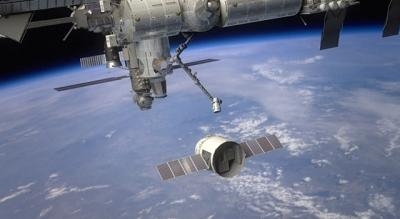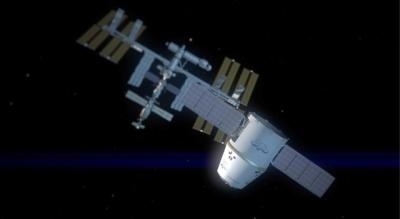Mon, May 21, 2012
Launch from Cape Canaveral Would Set The Stage For Historic Test Flight
SpaceX and NASA have set 0344 EDT on Tuesday, May 22nd for the next attempt to launch a Falcon 9 rocket carrying a Dragon spacecraft to orbit that would make SpaceX the first commercial company in history to try to send a spacecraft to the International Space Station. To date, sending a spacecraft to the space station has only ever been accomplished by four entities – the United States, Russia, Japan and the European Union.

Saturday’s launch was aborted when the flight computer detected slightly high pressure in the engine 5 combustion chamber. During rigorous inspections of the engine, SpaceX engineers discovered a faulty check valve on the Merlin engine. The failed valve was replaced on Saturday and after thorough analysis the vehicle has been cleared for launch.
During the mission, Dragon must perform a series of complex tasks, each presenting significant technical challenges (dates subject to change):
- May 22/Launch Day: SpaceX’s Falcon 9 rocket launches a Dragon spacecraft into orbit from the Cape Canaveral Air Force Station.
- May 23: Dragon orbits Earth as it travels toward the International Space Station.
- May 24: Dragon’s sensors and flight systems are subject to a series of complicated tests to determine if the vehicle is ready to berth with the space station; these tests include maneuvers and systems checks that see the vehicle come within 1.5 miles of the station.
- May 25: NASA decides if Dragon is allowed to attempt to berth with the station. If so, Dragon approaches; it is captured by station’s robotic arm and attached to the station. This requires extreme precision as both Dragon and station orbit the earth every 90 minutes.
- May 26 - 31: Astronauts open Dragon’s hatch, unload supplies and fill Dragon with return cargo.
- May 31: Dragon is detached from the station and returns to Earth, landing in the Pacific, hundreds of miles west of Southern California.

This is SpaceX's second demonstration flight under a 2006 Commercial Orbital Transportation Services (COTS) agreement with NASA to develop the capability to carry cargo to and from the International Space Station. The purpose of the flight is to provide NASA and SpaceX with flight data needed to ensure successful future missions to the space station. Demonstration launches are conducted to determine potential issues so that they might be addressed and – by their very nature – carry a significant risk. If any aspect of the mission is not successful, SpaceX will learn from the experience and try again. (Images provided by SpaceX)
More News
Airbus Racer Demonstrator Makes Inaugural Flight Airbus Helicopters' ambitious Racer demonstrator has achieved its inaugural flight as part of the Clean Sky 2 initiative, a corners>[...]
A little Bit Quieter, Said Testers, But in the End it's Still a DA40 Diamond Aircraft recently completed a little pilot project with Lufthansa Aviation Training, putting a pair of >[...]
Line Up And Wait (LUAW) Used by ATC to inform a pilot to taxi onto the departure runway to line up and wait. It is not authorization for takeoff. It is used when takeoff clearance >[...]
Contributing To The Accident Was The Pilot’s Use Of Methamphetamine... Analysis: The pilot departed on a local flight to perform low-altitude maneuvers in a nearby desert val>[...]
From 2015 (YouTube Version): Overcoming Obstacles To Achieve Their Dreams… At EAA AirVenture 2015, FedEx arrived with one of their Airbus freight-hauling aircraft and placed>[...]
 Airbus Racer Helicopter Demonstrator First Flight Part of Clean Sky 2 Initiative
Airbus Racer Helicopter Demonstrator First Flight Part of Clean Sky 2 Initiative Diamond's Electric DA40 Finds Fans at Dübendorf
Diamond's Electric DA40 Finds Fans at Dübendorf ANN's Daily Aero-Term (04.23.24): Line Up And Wait (LUAW)
ANN's Daily Aero-Term (04.23.24): Line Up And Wait (LUAW) NTSB Final Report: Extra Flugzeugbau GMBH EA300/L
NTSB Final Report: Extra Flugzeugbau GMBH EA300/L Classic Aero-TV: 'Never Give Up' - Advice From Two of FedEx's Female Captains
Classic Aero-TV: 'Never Give Up' - Advice From Two of FedEx's Female Captains




